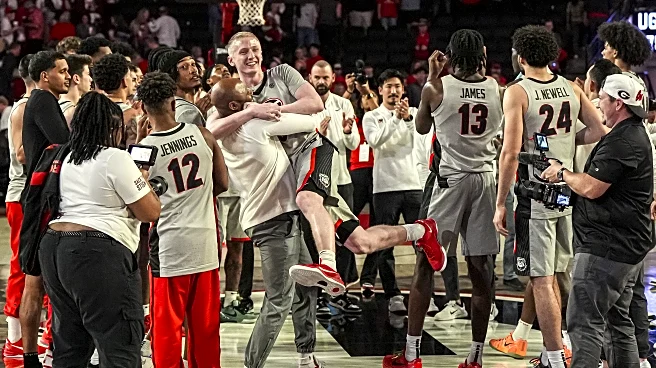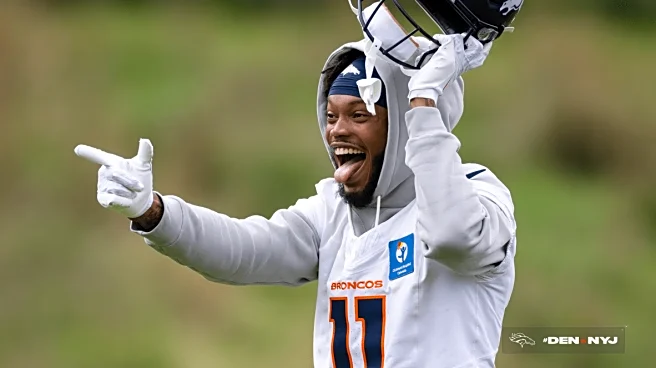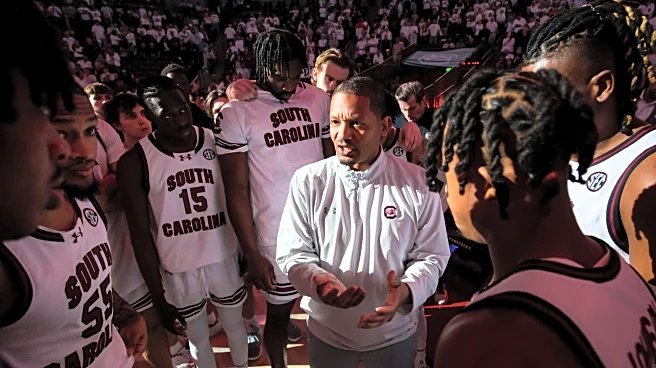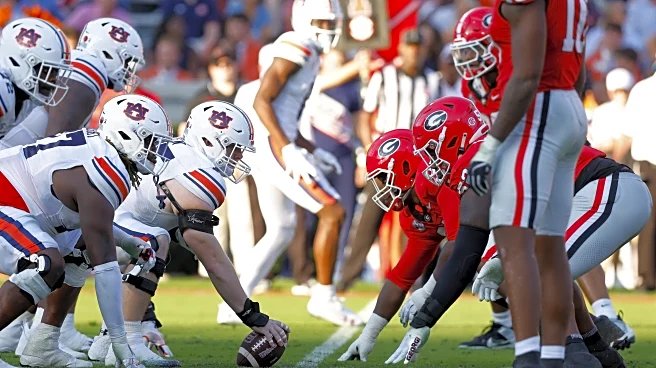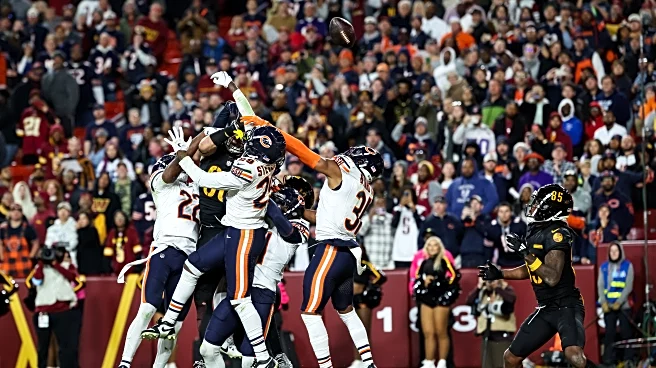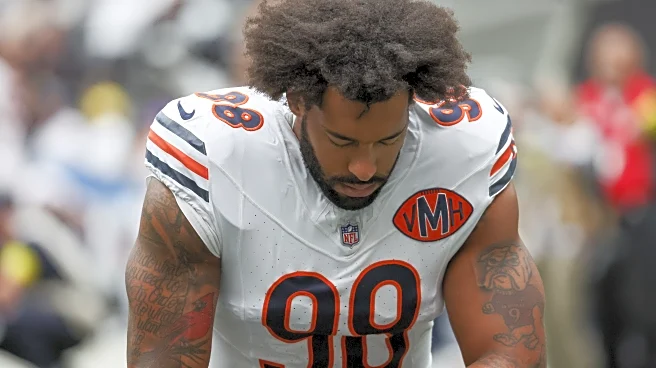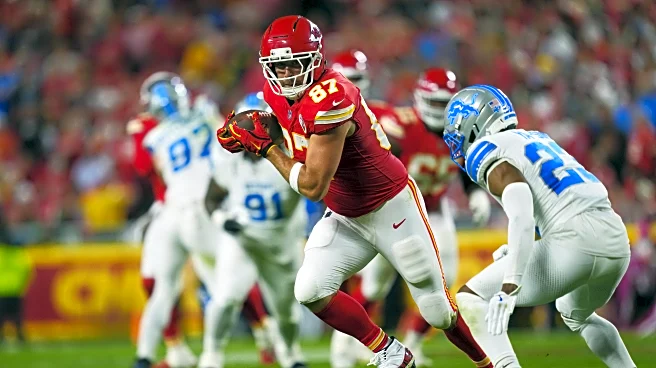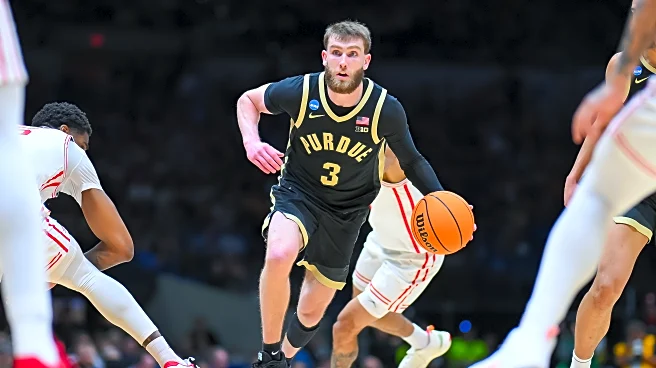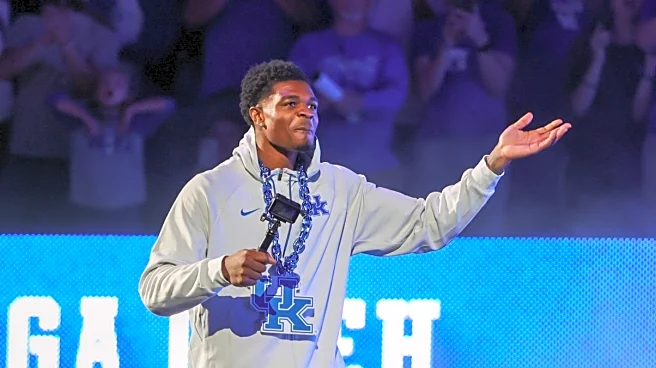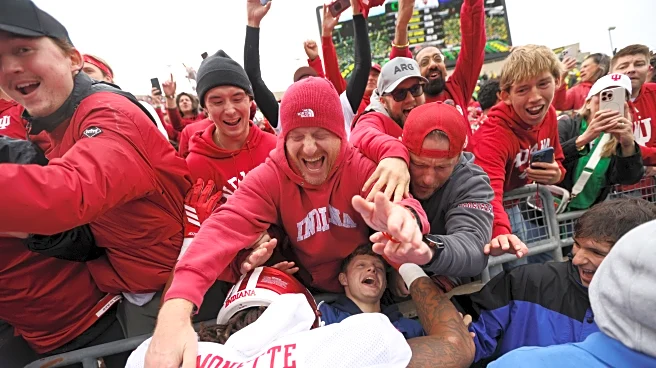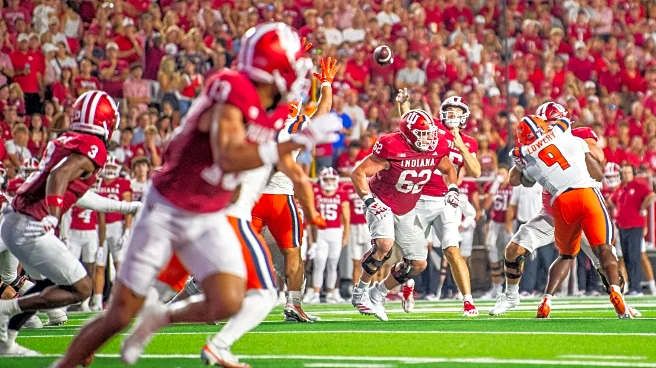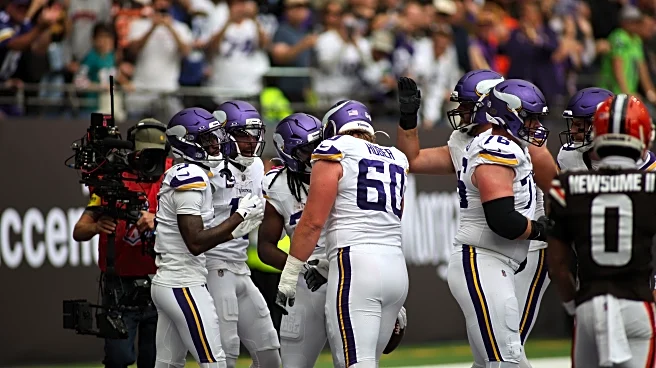Last year was the year Georgia was able to break out from the doldrums of bad basketball, and the good years of just being mediocre. The Bulldogs built a sturdy roster centered around defense, and used the strength of the SEC to make it back to the NCAA tournament for the first time since 2015.
Maybe describing it as a breakout is excessive.
The Bulldogs were merely solid in a great league. They still finished below .500 in SEC play, and had only three wins inside the top 40. The defense was stout
and phsyical, the offense struggled at times, but in the end they were able to string together enough wins to get back into the tournament. The good news was the success of the program was largely built around a young core playing together for multiple years.
The bad news is the key cog of that core left via the transfer portal, and leading scorer Asa Newell declared for the NBA Draft. Will this be a reset year in Athens?
Previous SEC Previews:

Georgia Bulldogs
- Last season: 20 – 13 (8-10 in conference) #38
- The Masses Prediction: 14th in conference, 4.93 – 13.07
- SEC Media: Coming October 15th
- Analytics Average: 13th in conference, 42th overall

HEAD COACH: Mike White | 4th Season, 56-46
White enters year four in Athens having elevated the program out of the basement they were mirred in under Tom Crean. After two straight seasons of finishing 6-12 in the league, White led Georgia to a couple extra wins which was enough to get them over the hump and back into the NCAA Tournament.
White, at the least, has made Georgia basketball not bad.
The question remains, however, if he can help this program into the next category. The SEC has been a very stout league with elite coaches for the last 5-10 years really. Rick Barnes, Bruce Pearl, John Calipari, and more. With Pearl retiring this year and handing the reigns over to his son, and Calipari and Barnes being in the winter of their respective careers, is Georgia positioned under White to be a program that can step up into that void?
Judging by how things went in Florida it seems unlikely. Give credit to White for elevating a bad program, but there are still major questions of whether he can be the type of coach who can get more out of any given roster. History shows he’s more likely to underachieve than overachieve.
Few things in college sports are fixed, so that perspective can change. But there’s also a question of whether Georgia, a football loving school, will care to give enough resources for White to build beyond the middle of the league.

Establishing the Bulldogs back to baseline has been White’s achievement so far. Mark Fox ran the program for years and was never awful. He was never great either. You’d have to go back to Jim Harrick’s last season (when he was fired and handed a show cause penalty by the NCAA) in 2003 for the last time Georgia finished the season ranked in the top 25.
But the 80s and 90s were a good time for Georgia basketball. From 83 to 2001 they went to 9 NCAA tournaments, including a Final Four and a Sweet 16 appearance. Hugh Durham and Tubby Smith both won at Georgia, so it’s not a lost cause to dream bigger than just making the tournament every so often.
LOST PRODUCTION
5th in % minutes, 68.62% | 9th in % points, 74.22% | 9th
in % possessions: 73.42%
Everyone knew before the season Asa Newell was likely to end up declaring for the NBA Draft after just one season in Athens. You can prepare for that. But losing Silas Demary, Jr to the transfer portal is the one that stings here.
Last year was about the solid core Mike White had prepped to have ready to go when Newell set foot on campus and the centerpiece of that core was Demary. A physical combo guard, Demary improved his scoring and efficiency from his freshman season, and most notably improved his three point shooting from 30.3% to 37.4%.
As if losing Demary and Newell wasn’t enough, the Bulldogs also watched 5 of their top 6, and 6 of the top 8 scorers from last years team. Dakota Leffew and Tyrin Lawrence graduated, and R.J. Godfrey and De’Shayne Montgomery both transferred out.


Despite losing a lot of production, Georgia is still returning more than most of the SEC. But the biggest returner is fan favorite and third leading scorer Blue Cain. As a freshman, Cain was an energy player, but he rounded out his game as a sophomore and became endeared by the Georgia faithful. So much so they took to holding up blue cane’s in honor of Blue Cain.
The only other player coming back to start games last year isn’t Somto Cyril, despite it feeling like he probably started in there somewhere, it was Dylan James. Cyril was a prized recruit, a former Kentucky commit and top 50 center, who was consistently in the rotation, despite some ups and downs with production. Meanwhile James found himself in the starting lineup at the end of the year, and the change helped change Georgia’s sinking tournament hopes. In the last 7 games of conference play, James started 6 of them and averaged nearly 20 minutes per game.
With so much production lost, White needed to hit it big in the portal and he added some intriguing pieces. The biggest addition might have the biggest question mark, BYU transfer Kanon Catchings. An NBA level talent, Catchings has yet to put everything together but he teased throughout his one season in Provo, and the ceiling is very real.
But in need of more of a sure thing, White also imported Georgia native Jeremiah Wilkinson, a transfer from Cal who averaged over 15 points a game for the Golden Bears. Also former 4-star point guard Jordan Ross, who spent two seasons at Saint Mary’s, should help manage the ball handling duties. The biggest addition from the prep recruiting class was a no brainer, former Georgia star and NBA Hall of Famer Dominique Wilkins 4-star son Jacob Wilkins.


Losing Demary was big, but White’s done a good job in filling in around the hole he left behind. Four players started all 33 games last year and only Cain returns, it’s hard to imagine Georgia not going hard in on Cain as the mainstay. Maybe he isn’t the kind of player you’re going to funnel possession to but he found a level of consistency last year. Cain averaged over 10 ppg during SEC play, but down the stretch he was even better. The next step for Cain will be to avoid the dips which still popped up from game to game.
There’s a battle to be determined at point guard with Jordan Ross, and former UTSA star guard Marcus “Smurf” Millender. Millender is a slight 5’11 scoring guard who’s a very good jump shooter, but his size makes it difficult for him to finish around the rim.
Somto Cyril taking another step would be a good thing for the post position. Last season he was a brute around the rim, solid defensively, but the offensive skill set was limited to say the least.
There’s also a question around James, who came on a starter last year, and who could push Catchings into more of a true wing spot. Catchings could then push Cain into more of the shooting guard role, but then the problem is Jeremiah Wilkinson. He’s likely to be one of the primary scorers, in a similar way to Demary, but Wilksinson isn’t a lead guard. He is a scoring guard. If he’s on the floor, White will need either Ross or Millender to handle the primary responsibilities. Which again pushes everyone back down a position.


With a fairly new roster and season where you’re hoping to get back into the NCAA tournament, this schedule makes a good amount of sense.
Quite frankly it’s soft. Five top 100 games but nothing inside the top 35. Some of that isn’t anything White can help, they were given FSU as their opponent in the ACC-SEC Challenge, and the Seminoles are in a period of reconstruction in the wake of Leonard Hamilton resigning.
They are guaranteed two top 60ish games on a neutral in the Charleston Classic. Hopefully they can get Clemson who is the only path for them to get a Quad 1 game. If they don’t get Clemson then they’re down to just one Q1 game against Cincinnati, which is a game in Atlanta. Virtually a home game.
Outside of their high majors there are no teams who should push Georgia. Although I did think it was interesting on their online schedule they have LIU-Brooklyn listed, and LIU-Brooklyn doesn’t exist anymore. Not since 2019, it’s just LIU now. The two athletic departments merged into one. Might want to update that, Georgia.
THE RULING
The biggest question about Georgia is who is going to drive the bus? Last year the bus was driven by Silas Demary, and Asa Newell to a lesser degree. Even when both weren’t taking shots, they were still impacting the game on offense.
Catchings is a 19.9% usage guy, Cyril is a 19.1% usage guy, Jordan Ross is an 18% usage guy, even Cain was a little over 17% last year. Going to the likely bench players it’s much of the same. Milllender was a scorer for UTSA, but even his usage was light and more about jumpshots.
The only player with a usage high enough to drive the bus is Jeremiah Wilkinson, who had a 27% usage rate at Cal. Wilkinson was a good get out of the portal, but he was getting buckets for a bad team as a 6’1 shooting guard. If Wilkinson were cast as a bit more of a Robin type, instead of Batman, I think you can look at this build a lot different.
The collection of talent here is good, but when things were going well last year’s team really drilled in on the defensive end of the floor. And if there’s a deficit of having a smaller shooting guard it’s usually that they can be exploited a bit defensively. There’s no doubt this team looks like it’s going to take a step back defensively. And if they’re taking a step back defensively, is there enough offensive pop to make up the difference?
Mike White really needs Catchings to pop, and he needs Cain to take a big step forward in usage without losing too much efficiency. If another freshman, say Jake Wilkins, wants to make a jump into the rotation and provide some offense, that might go a long way as well. But as things stand this looks like it’ll be a competitive group that struggles to score at times, and can get a little leaky defensively. More like a team on the outside looking in of the NCAA bubble than a team destined for a top half finish in the league.
They look like they’re just missing one guy.
My Results: Georgia Bulldogs — 14th in Conference, 6-12
About the preview: a number of respected basketball bloggers were asked to submit one pick for the entire league schedule game by game. The game by game option allows us to account for the unbalanced schedule when addressing any kind of power rankings. Each set of picks are reflected in “the Masses” picks. Included in “the Masses” are various SEC media members who made picks at my request, as well as additional credit given to the analytics projections.
If you’d like to submit your picks, click here for the Google Form we used. If you want to know your results, send me an email.
Additionally, instead of relying solely on KenPom.com for the analytics site projections, we’re taking the average of the four main sites (EvanMiya.com, BartTorvik.com, Haslametrics.com, and KenPom.com) to give a closer consensus picture. These are weighted a touch for reliability.
The projections: This is new! In an attempt to be as accurate as we could be we increased the amount of analytics used to make individual projections which influenced how these teams slotted in order. Matt Watkins used an in-depth method for projecting the entire SEC transfer list, we then mixed in EvanMiya.com’s BPR projections, and BartTorvik.com’s preseason individual projections to round out the expected production based upon how each coach routinely uses his rotations.
GLOSSARY
* – an asterisk denotes a walk-on player
GP – Games Played
%min – percentage of total available minutes played, does not account for time missed due to injury
%poss – percentage of team possessions the player is responsible for ending a possession, whether by making a shot, missing a shot not rebounded by the offense or committing a turnover. For returning players this is noted as a percentage of total team possessions. For newcomers it was total possessions when that player was on the floor, better known as Usage Rate.
ORtg – Offensive Rating, similar to a points per possession but averaged out over 100 possessions. So it’s how many points a player would score if they were responsible for 100 possessions.
BPR – Bayseian Performance Rating, a single player efficiency metric created by Evan Miyakawa to determine both offensive and defensive impact when a player is on the floor.
PAR – Points Above Replacement, a Rock M+ proprietary rating measuring projected on-off impact adjusted for time on the floor.
PPG – Points Per Game, RPG – Rebounds Per Game, APG – Assists Per Game: All traditional statistics used to measure player production.
For newcomer player rankings, we used EvanMiya.com’ s rankings for transfers, and 247sports.com ‘s Composite Rating for Freshmen and Junior College signees.
